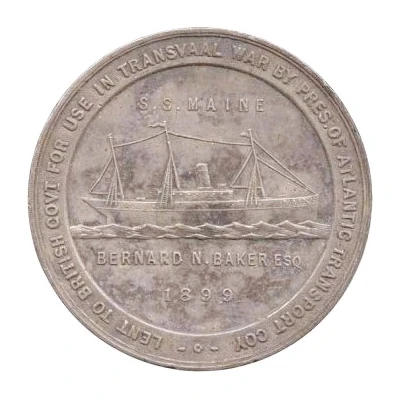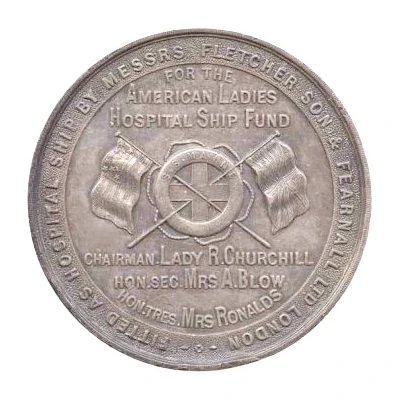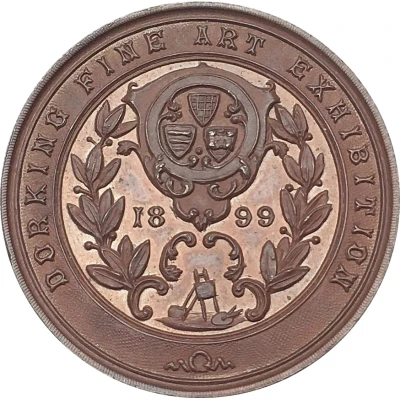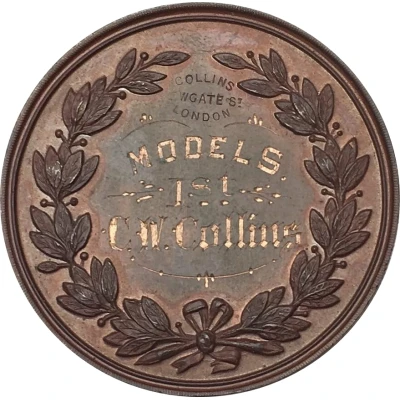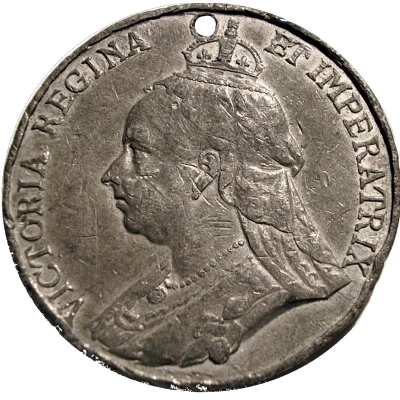


© Albator (CC BY-NC-SA)
Token - Victoria Royal visit at Durham Down Hospital, Bristol
1899 year| Tin-lead | 20.6 g | 39 mm |
| Location | United Kingdom (United Kingdom, British Overseas Territories and Crown Dependencies) |
|---|---|
| Queen | Victoria (1837-1901) |
| Type | Commemorative medals › Visit medals |
| Year | 1899 |
| Composition | Tin-lead |
| Weight | 20.6 g |
| Diameter | 39 mm |
| Thickness | 2 mm |
| Shape | Round (Hanging hole) |
| Technique | Milled |
| Orientation | Medal alignment ↑↑ |
| Updated | 2024-11-14 |
| Numista | N#230358 |
|---|---|
| Rarity index | 97% |
Reverse
Legend around and on seven lines, date and Mayor's name at the bottom.
Script: Latin
Lettering:
IN COMMEMORATION
OF THE / LOVING WELCOME / GIVEN BY THE CHILDREN / OF BRISTOL TO / QUEEN VICTORIA / ON DURDHAM DOWN /
BRISTOL
NOV 15 1899
HERBERT ASHMAN LORD MAYOR
Edge
Plain
Comment
Queen Victoria Jubilee Convalescent Home on Durdham Down, was opened in 1899.The Bristol Maternity Hospital developed from the Temporary Home for your women established in 1865. In 1894 "Lying-in Hospital" was added to the Home's title and it became the Bristol Maternity Hospital in 1939. In 1950 the Hospital moved from its premises in Southwell Street to the Queen Victoria Convalescent Home on Durdham Down, opening in 1899. Maternity cases are now dealt with in the Obstetrics Wards at Southmead Hospital and the new Bristol Maternity Hospital on St.Michael's Hill, replacing the building on Durdham Down.
The Allen Memorial Chapel was dedicated in 1912. It was connected to Southwell House, also known as 50 Southwell Street, by a passage, though it was constructed separately. In 1960 it was rededicated as the chapel for the Bristol Royal Hospital for Sick Children.
The first Anglican chaplain was appointed 1903 and the first free church chaplain in 1951. Lay readers played an important part in the conduct of services at Southwell Street.
The Queen Victoria Jubilee Convalescent Home was opened by Queen Victoria on the 15th. November 1899. The Home was designed to take patients from the Bristol Royal Infirmary and the General Hospital in order to free up beds. The Home accepted patients who were deemed not to need active medical and surgical treatment, but rather a period of rest and careful diet, and as much fresh air as possible.
It was built close to Durdham Down, an area of public open space.
The Home later became Bristol Maternity Hospital before being converted into offices.
Paul Townsend
